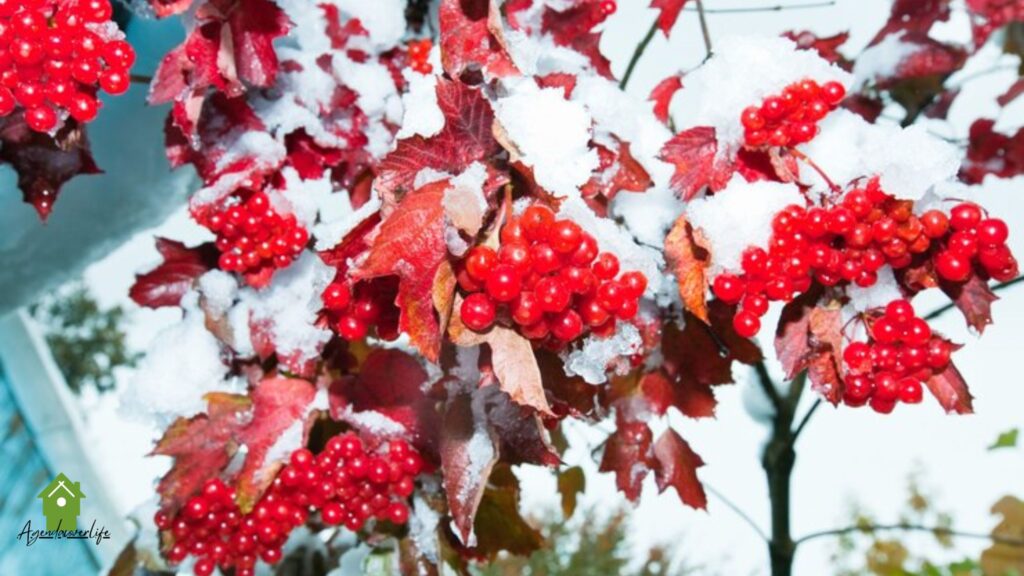
When it comes to versatile plants that add beauty, function, and charm to your garden, viburnum is in a league of its own. Known for their stunning blooms, vibrant berries, and foliage that transforms with the seasons, viburnums can elevate any garden design. Whether you’re creating a private retreat, a wildlife-friendly haven, or simply looking to add structure and style, viburnums offer a world of possibilities. Let’s explore the various ways you can use viburnum in your landscaping and uncover tips to keep them thriving. Viburnum Landscape Uses include versatile hedges, privacy screens, foundation plants, wildlife attraction, seasonal interest, low maintenance, flowering shrubs, and ornamental borders.
Why Viburnums Are Perfect for Landscaping
What makes viburnum such a standout choice? These plants are incredibly durable, adaptable, and come in a variety of shapes and sizes to suit any garden style. With hundreds of species to choose from, including evergreen and deciduous varieties, there’s a viburnum for nearly every climate and aesthetic. On top of that, they’re low maintenance and provide year-round interest, from spring blossoms to colorful fall foliage and winter berries.
Beyond their beauty, viburnums are also practical. They can act as natural hedges, serve as a haven for pollinators, and even attract wildlife like birds and butterflies. Whether you’re redesigning a sprawling backyard or adding texture to a cozy garden, viburnum is an option worth considering.
Stunning Hedges and Privacy Screens
If privacy is your goal, viburnum can get the job done while adding visual appeal. Certain types, like Viburnum tinus or Viburnum odoratissimum, grow dense, shrub-like foliage perfect for creating natural screens. When planted as a hedge, these viburnums form a lush barrier that can block noise and shield your space from prying eyes.
How to Plant a Viburnum Hedge
- Choose the Right Viburnum: Select a fast-growing variety if you need privacy quickly. Viburnum odoratissimum is an excellent choice for warmer climates, while Viburnum x burkwoodii thrives in temperate areas.
- Spacing: Space each plant 3 to 4 feet apart to allow for healthy growth without overcrowding.
- Watering and Mulching: Keep the soil moist, especially during the first few months. Add mulch to retain moisture and reduce weeds.
- Pruning: Trim lightly after flowering to maintain the desired height and shape.
Not only will a viburnum hedge enhance your landscape, but it also increases property value and creates a serene, enclosed space for relaxation.
Focal Points and Ornamental Features
If you’re looking to make a statement in your garden, viburnum makes an excellent centerpiece or ornamental feature. Many varieties bloom in spring, producing clusters of flowers that range from pure white to soft pink. Some, like Viburnum plicatum (Japanese snowball), even offer dramatic layered foliage that looks like natural art.
Tips for Using Viburnum as a Focal Point
- Location Matters: Plant viburnum in a spot where it can be admired from multiple angles, such as near a patio or at the end of a walkway.
- Companion Plants: Pair viburnum with perennials like hostas, ferns, or daylilies to create visual balance.
- Seasonal Interest: Choose a variety with berries that persist into winter to keep your garden colorful even in colder months.
Wildlife-Friendly Gardens
Do you dream of a garden teeming with life? Viburnums can help you bring that vision to life. Their flowers are nectar-rich, attracting bees, butterflies, and other pollinators. Once the flowers fade, the berries take center stage, providing food for birds during the lean winter months.
Best Viburnum Varieties for Wildlife
- Viburnum dentatum (Arrowwood): Its blue-black berries are irresistible to birds.
- Viburnum opulus (European cranberrybush): Produces tart red fruits that wildlife love.
- Viburnum trilobum (American cranberrybush): Perfect for a native garden that supports local ecosystems.
By planting a cluster of viburnums along with other wildlife-friendly shrubs, you can create a mini sanctuary right in your backyard.
Adapting Viburnum to Different Landscapes
Another reason viburnum is a gardener’s favorite is its adaptability. Whether you have a formal garden, a woodland retreat, or a drought-prone yard, viburnums can fit seamlessly into your design.
Formal Landscapes
For a polished, elegant look, plant viburnum in symmetry. Use neatly pruned Viburnum tinus in pots or plant Viburnum carlesii along pathways to line your garden with fragrance and beauty.
Natural or Woodland Gardens
For a more relaxed, natural vibe, the sprawling habit of Viburnum tomentosum (doublefile viburnum) works beautifully. Plant it alongside native ferns and wildflowers for a serene woodland retreat.
Water-Wise Gardens
If you’re in a drought-prone area, look for varieties like Viburnum suspensum. They tolerate heat and dry conditions exceptionally well, making them a sustainable choice for landscapes with limited water resources.
Maintenance Tips for Thriving Viburnums
Like any plant, viburnums need care to stay healthy and vibrant. Here are some maintenance tips that make all the difference:
- Sunlight: Most viburnums grow best in full sun to partial shade. Make sure to choose the right location based on your chosen variety’s needs.
- Watering: While viburnums are fairly drought-tolerant once established, they do need regular watering in the first year.
- Soil: Viburnums prefer well-draining soil with plenty of organic matter. If your soil is clay-heavy, consider amending it before planting.
- Pruning: Remove dead or crossing branches in late winter or early spring. Occasional pruning can improve airflow and prevent disease.
- Fertilizing: Apply a balanced slow-release fertilizer in early spring to encourage healthy growth.
The Lasting Benefits of Viburnums
By adding viburnum to your garden, you’re not just planting a shrub—you’re investing in a landscape that evolves with the seasons. The blossoms in spring, lush green foliage in summer, vibrant reds and oranges in fall, and berries in winter create a tapestry of beauty year-round. On top of that, viburnum supports the environment by providing food and shelter for wildlife, making your garden a sustainable and ethical haven.
Where to Start?
If you’re ready to transform your landscape, start by choosing a viburnum variety that aligns with your climate and garden style. Visit a local nursery for expert advice and don’t be afraid to get creative with your planting design. With a little effort, viburnum can bring timeless elegance and unmatched vibrancy to your outdoor space. Your garden deserves a touch of magic, and viburnum is just the plant to deliver it!









